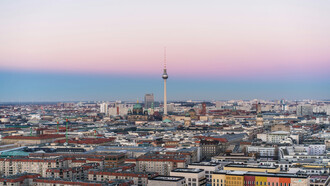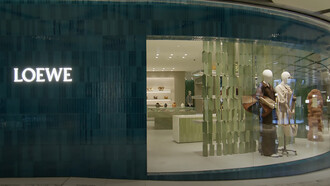When you look at Japanese traditional architecture, you have to look at Japanese culture and its relationship with nature.
Japanese architecture is globally admired for both its traditional and modern aspects. Many shrines and temples in Japan adopt specific building elements. Shrines, for instance, follow the “shinmei-zukuri” style characterized by the gabled roof and sculpted logs called chigi and katsuogi, which are seen along the ridge of the roofs. Similarly, the traditional Japanese home called minka can be identified by the tatami mat flooring, fusuma sliding doors of closets and indoor entrances, shoji windows, tokonoma alcove, engawa veranda, and open planning. These classical features are still visible in many homes today. Some contemporary Japanese architects keep close to the traditional character while embodying novel elements, as seen in ryokans or inns with a touch of modern lighting or furniture, or varied treatment of indigenous wood on exterior facades or interior finish. They have been continually praised for their innovative and unique creations in fusing the old with the new. Kenzo Tange, Fumihiko Maki, Kisho Kurokawa, Toyo Ito, Kengo Kuma, Shigeru Ben, and of course Tadao Ando are some of the prominent names that shine in the international circle.
Joining this outstanding court of Japanese architects is Junzo Sakakura (1901-1969). Having graduated from Tokyo Imperial University (now Tokyo University), Sakakura moved to France in 1929 and worked under the guidance of world-renowned architect Le Corbusier. Consequently, he designed the Japanese Pavilion at the 1957 Paris Exposition, which presented him the Grand Prix award in the Architecture Section.
One of Sakakura’s highly acclaimed works is the Tsurugaoka Museum, Kamakura in probably one of the most visited historical and leisurely towns outside of Tokyo. As Kamakura is primarily reputed for its cultural sites, such as the Great Buddha (Daibutsu), Engakuji Temple, Meigetsuin, Hasedera, and other temples and shrines, discovering the modern Tsurugaoka Museum, Kamakura comes as a surprising revelation. Furthermore, it is located adjacent to the famous Tsurugaoka Hachimangu Shrine, which emphasizes the magical blend of history and modernity.
The route to Tsurugaoka Museum, Kamakura is an enjoyable stroll along the popular Komachi Dori shopping street lined with sumptuous local delicacies, such as manju cakes, rice crackers, sticky rice mochi in assorted flavors, side by side with native fabrics, ceramics, handicrafts, and the notable Kamakura bori woodcraft. As you approach the far end of the shopping street and finally reach the museum grounds with thick trees guarded by a surrounding wall, the silhouette of a huge, white stone building peeps through the foliage. At once, you are caught in unexpected awe as the stoic modernity of the structure seems to float on the expansive pond. Sakakura brilliantly combines steel frames, whiteboards, and Oya-stone, an indigenous rock produced from the Oya district of Utsunomiya, Tochigi prefecture. Sakakura was inspired by Le Corbusier in incorporating the building design with a central courtyard and a row of columns. To inject the Japanese ambiance apart from the utilization of Oya stone, he also placed individual pillars into the pond by supporting them with natural stones, a technique visible in ancient Japanese architecture.
The construction of the museum was completed in 1951 and was formerly called the Museum of Modern Art, Kamakura. After passing through several renovations, the building’s ownership was then transferred and grounds returned from Kanagawa Prefecture to the Tsurugaoka Hachimangu in 2016. The overall style was, in fact, patterned after the Museum of Modern Art in New York, and reflected the union between the West and the East at that time. Like a white packaged box, the museum’s second floor protrudes over the ground floor like a protective shell. The first floor consists of the reception, shop, central courtyard, and a terrace with spectacular views of the pond and garden. From the terrace you can spot the exposed I-shaped steel pillars immersed in the water, An expanded exhibition space occupies the second floor. A modern café in a long, low building with a gabled roof sits outside the museum building. The patio walls also use Oya stones, and here you can spend leisurely hours bathed in the scent and warmth of the natural environment.
The beauty of this museum design lies in its aesthetic planning of smoothly conjoining with the natural surroundings as presented by the foundation pillars merged with the waters. The stroll around the garden can be quite brief, but adequately offers a refreshing glimpse in various angles of the modern building emerging from the pond. There is also an island garden in the middle of the pond, and the water runs until a red arched bridge linked to the path towards the Tsurugaoka Hachimangu Shrine. From this point, the vast scenery of the mountains behind clouds over the shrine and the museum-like a perfect postcard.
For those who seek a curious touch of the avant-garde while being embraced by Japanese tradition, visiting the Tsurugaoka Museum, Kamakura tenders an ideal occasion to be reminded of the Japanese eclectic culture.














